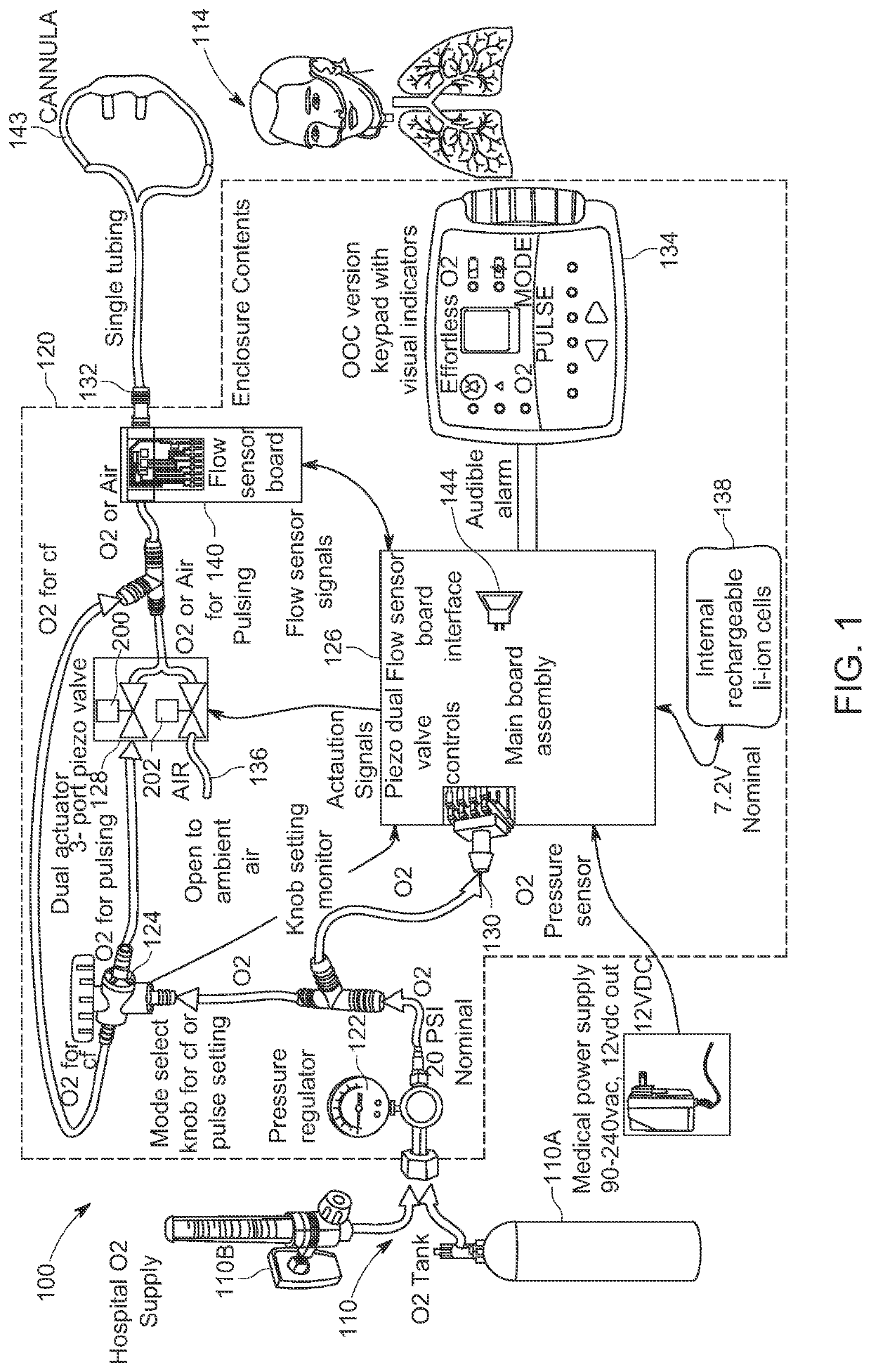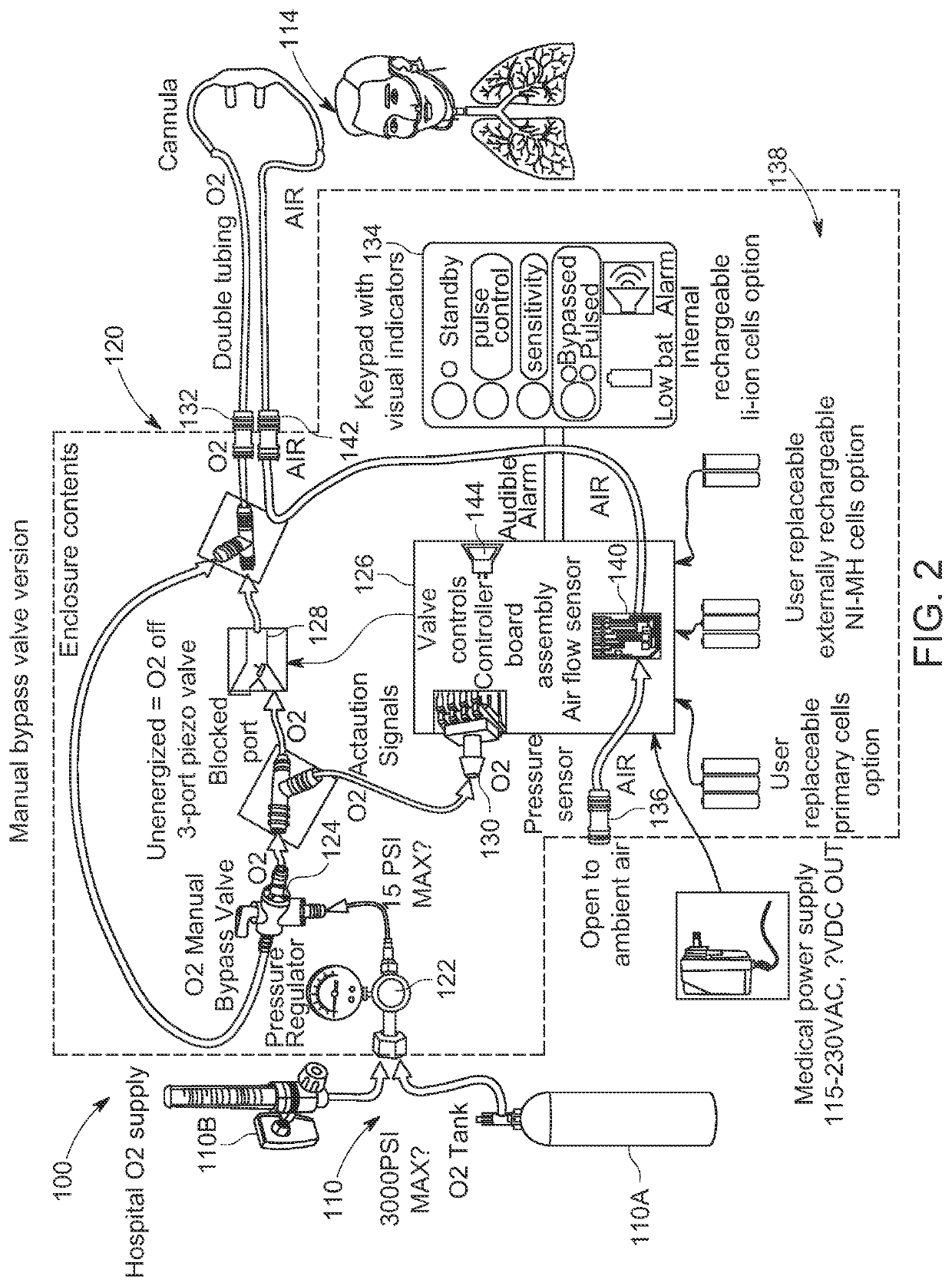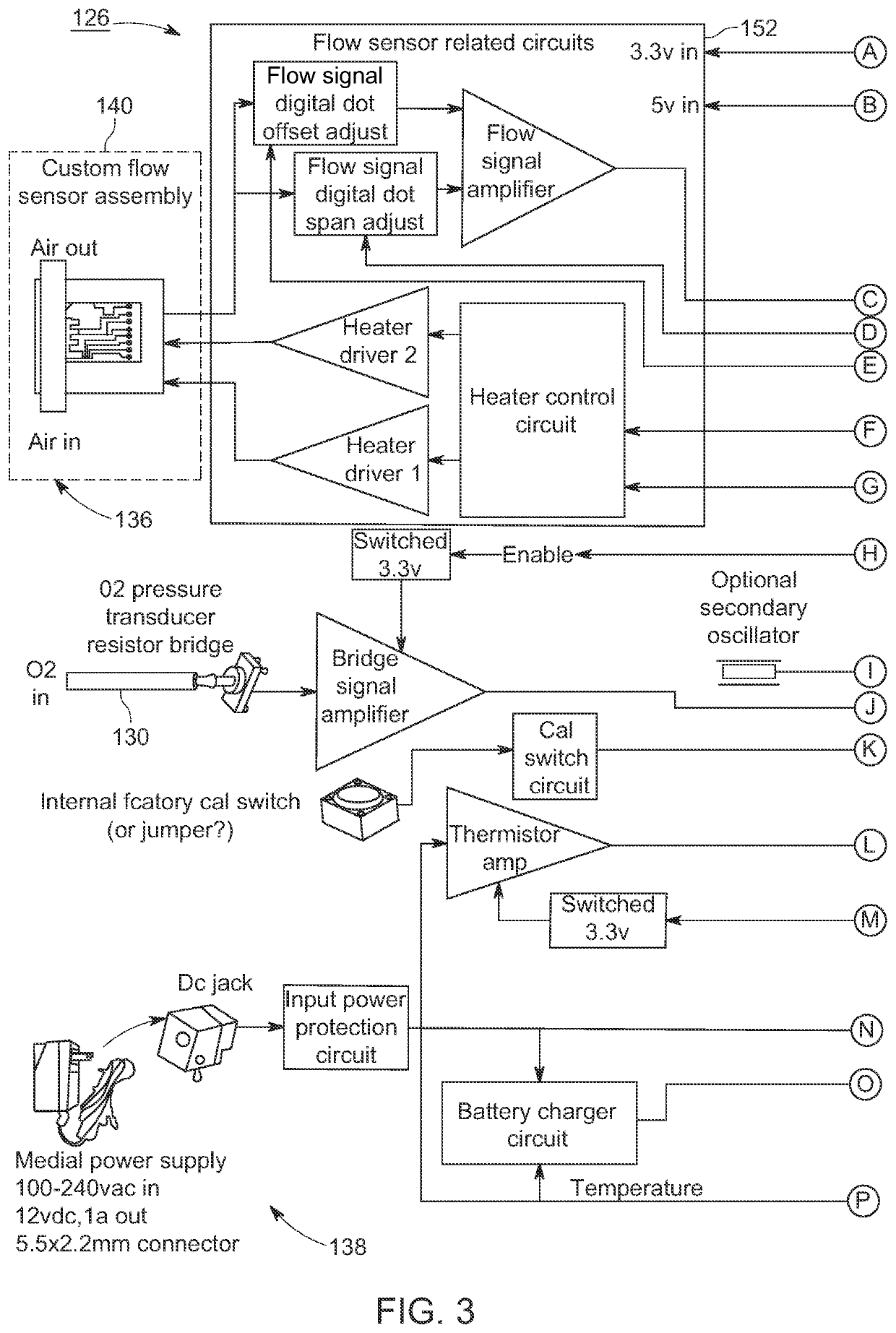Flow triggered gas delivery
a gas delivery and flow technology, applied in the field of flow triggered gas delivery, can solve the problems of no cure for this condition, portable oxygen delivery systems all have drawbacks, portable concentrators are usually bulkier and noisier, and have a relatively short battery li
- Summary
- Abstract
- Description
- Claims
- Application Information
AI Technical Summary
Benefits of technology
Problems solved by technology
Method used
Image
Examples
Embodiment Construction
[0035]As used herein “nasal cannula” is intended to include two lumen nasal cannuli as well as nasal masks or pillow masks. And “oral cannula” is intended to include face masks as well as breathing tubes, mouth pieces and the like, as well as diver and hazard helmets and the like.
[0036]Embodiments are described in the following description with reference to the drawing figures in which like numbers represent the same or similar elements. Reference throughout this specification to “one embodiment,”“an embodiment,”“certain embodiments,” or similar language means that a particular feature, structure, or characteristic described in connection with the embodiment is included in at least one embodiment of the present disclosure. Thus, appearances of the phrases “in one embodiment,”“in an embodiment,” and similar language throughout this specification may, but do not necessarily, all refer to the same embodiment.
[0037]The described features, structures, or characteristics of the disclosure...
PUM
 Login to View More
Login to View More Abstract
Description
Claims
Application Information
 Login to View More
Login to View More - R&D
- Intellectual Property
- Life Sciences
- Materials
- Tech Scout
- Unparalleled Data Quality
- Higher Quality Content
- 60% Fewer Hallucinations
Browse by: Latest US Patents, China's latest patents, Technical Efficacy Thesaurus, Application Domain, Technology Topic, Popular Technical Reports.
© 2025 PatSnap. All rights reserved.Legal|Privacy policy|Modern Slavery Act Transparency Statement|Sitemap|About US| Contact US: help@patsnap.com



